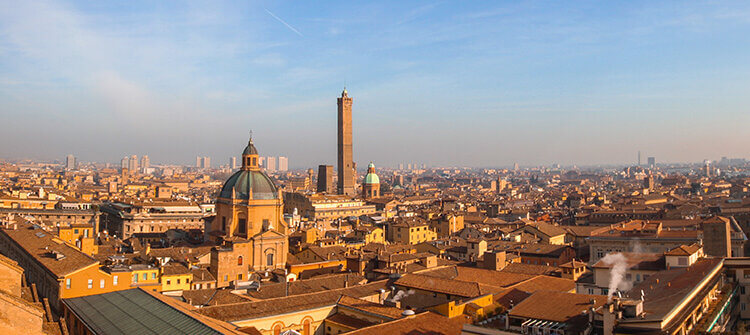The porticoes of Bologna are now part of the UNESCO World Heritage Site
Typical of Bologna are the beautiful, mostly sweeping arched porticoes that run through the city and connect many of the magnificent squares, churches and palaces. From now on, some of them are part of the UNESCO World Heritage Site. “It is a great satisfaction and a wonderful recognition that makes us happy,” commented the Mayor of Bologna, Virginio Merola. “With the inclusion of the porticoes of Bologna in the UNESCO World Heritage List, we have achieved a goal that we have pursued for a long time. This title is a great honor and at the same time a great responsibility for Bologna, and we will live up to this recognition,” Merola continued.
Bologna has a total of 39 miles of porticoes. However, not all porticoes were nominated. The choice was limited to a series of 12 components that together depict a cross-section of the architectural, historical and micro-geographical variety of the town- representing parts of the historic center and other more peripheral areas.
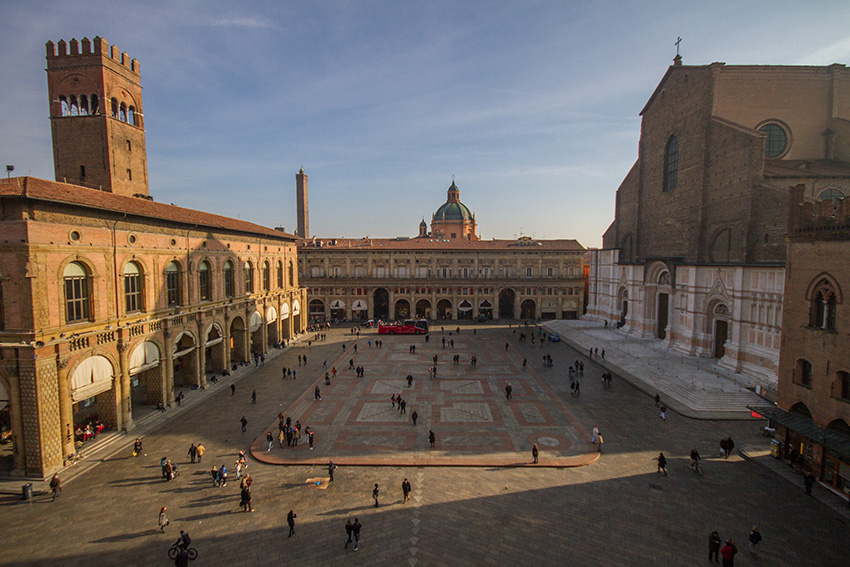
The UNESCO list therefore includes Piazza Santo Stefano, the porticos of Via Zamboni, those of Strada Maggiore, the MamBo portico building, the porticos of Piazza Cavour and Via Farini, immediately followed by the archway of San Luca, the Pavaglione porticoes and Piazza Maggiore, the porticoed street of Santa Caterina, the porticoed building in the Barca district, the Certosa portico, the Baraccano porticoes and the Galliera porticoed street.
The first porticoes date back to the 11th century, originally conceived to extend the surface area of private buildings in response to the need for expansion of commercial and artisan activities. For over ten centuries now, the porticos have been regarded as a meeting point, a place for aggregation and socializing for both locals and visitors. It is precisely this social aspect that distinguishes these covered spaces, which were and still are privately owned for public use while being considered the most identifying feature of the city.
Here, we present a few of the designated porticoes in Bologna:
Santo Stefano and Mercanzia
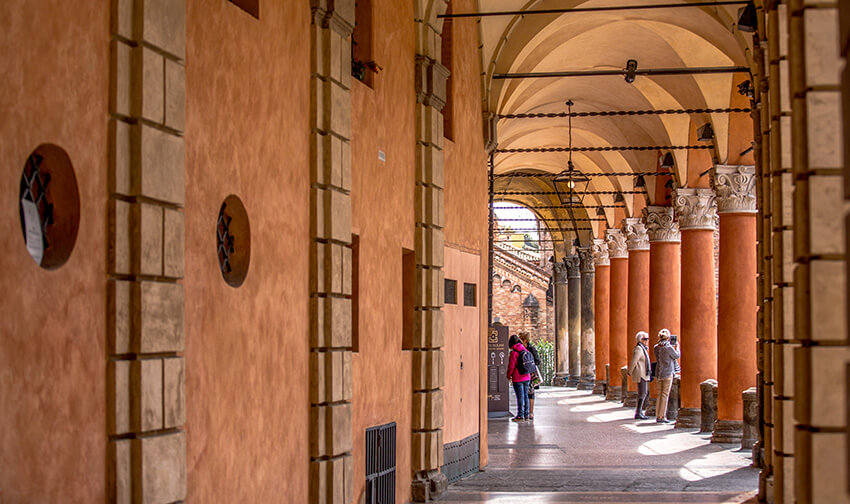
In this magical corner, one of the city’s most beautiful squares, with its cobblestones sloping down to the spectacular Basilica of Santo Stefano (aka “Seven Churches”), the porticoes appear as a real embrace, starting from the Palazzo della Mercanzia and continuing along the entire perimeter of its irregular buildings. An embrace that also embodies the liveliness of the activities carried out in their eternal shade: cafés, cocktail bars, historic restaurants, promenades, students chatting or playing the guitar. The most striking portico? Undoubtedly that of Palazzo Bolognini, with its terracotta “heads” that seem to peer out at passers-by. And here comes a recurring question that no one can ever answer: who are those heads depicting?
Pavaglione, Banchi and Piazza Maggiore
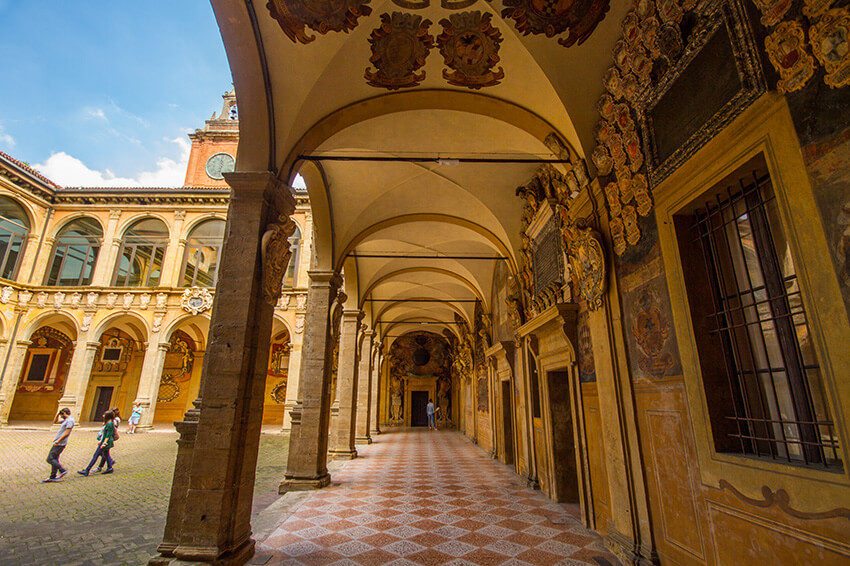
The Pavaglione (from ‘Papilio’, the name of the silkworm sold by notaries right under the portico in Piazza Maggiore) is undoubtedly Bologna’s most iconic portico. Located in the eastern part of the square under the Palazzo dei Banchi, it was built in the 15th century with the dual function of dividing the elegant Renaissance square from the intricate, chaotic and odorous maze of streets of the “Quadrilatero” (the ancient medieval market) and providing a suitable place for the city’s bankers to conduct their business and set up money-changing desks in a city that had by then reached a decidedly cosmopolitan dimension, thanks to the presence of countless students from different European and international countries. The portico, a majestic example of a Bolognese arcade, stretches from Via Rizzoli to Via Farini and includes several sections belonging to different buildings: from Palazzo Ronzani (soon to be the site of the Cineteca di Bologna’s new Modernissimo cinema) to the medieval Ospedale della Morte over the historic Archiginnasio complex with its Anatomical Theatre and the imposing Stabat Mater Hall.
San Luca
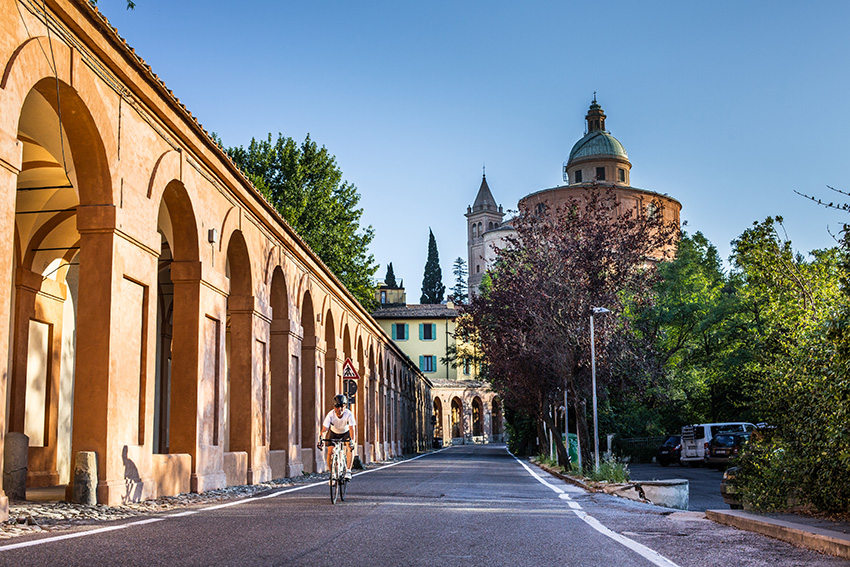
When talking about porticoes, we cannot but mention the extremely long archway of San Luca, the longest in the world, connecting the city center with the Sanctuary of the Madonna di San Luca, located on top of the Colle della Guardia, with a total length of about 4 km and almost 700 arches. The Basilica seems to watch over Bologna, connected to the city by this “umbilical cord” that keeps it close and allows wayfarers to walk the itinerary up and down in all weather conditions. Conceived as a devotional pilgrimage route, the Portico of San Luca is today a great “outdoor gym” attended every day at all times by children, groups of walkers, young and elderly people, who tire themselves out on the ascent from the “Cassero” of Porta Saragozza to the top of the hill, passing through the challenging “Curve of the Orphans” alternating steep climbs with steps and flatter stretches. A perfect route to work off that Sunday lunch of tortellini!
Cavour, Farini and Minghetti
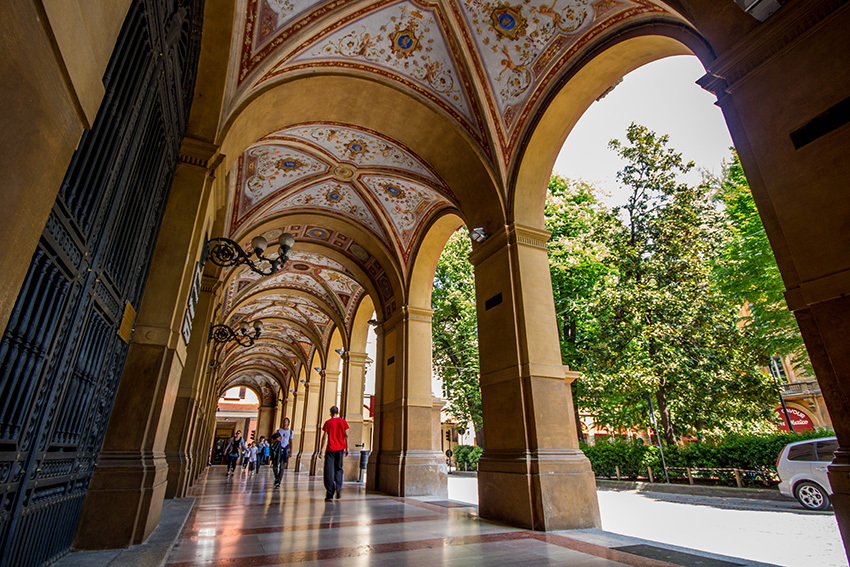
This is perhaps the most elegant and finely decorated portico in the city center, not surprisingly in a street, Via Farini, which is now characterized by luxury boutiques. The portico in question is the work of the artist Gaetano Lodi, who decided to decorate each vault of the archway with different historical episodes in chronological order and in splendid colors. The square is also famous for being the birthplace of the beloved Bolognese singer and songwriter Lucio Dalla.
Click on the link to find a complete list of the UNESCO porticoes
Photos: ArchivBolognaWelcome



